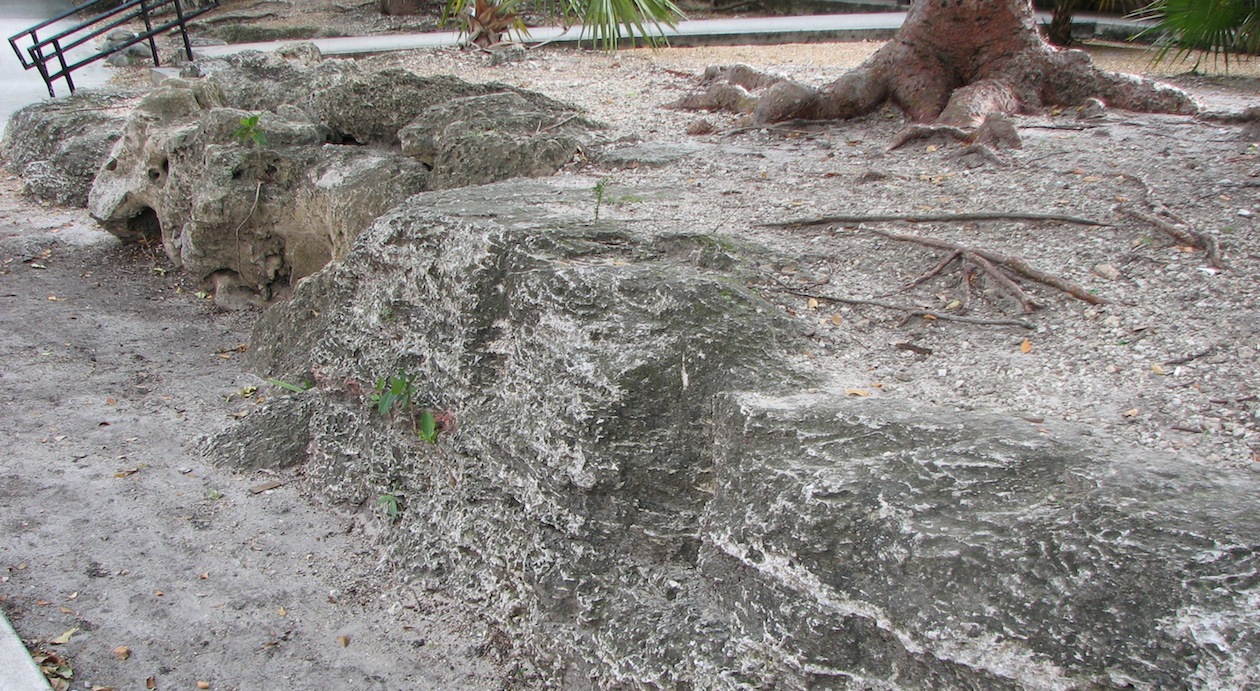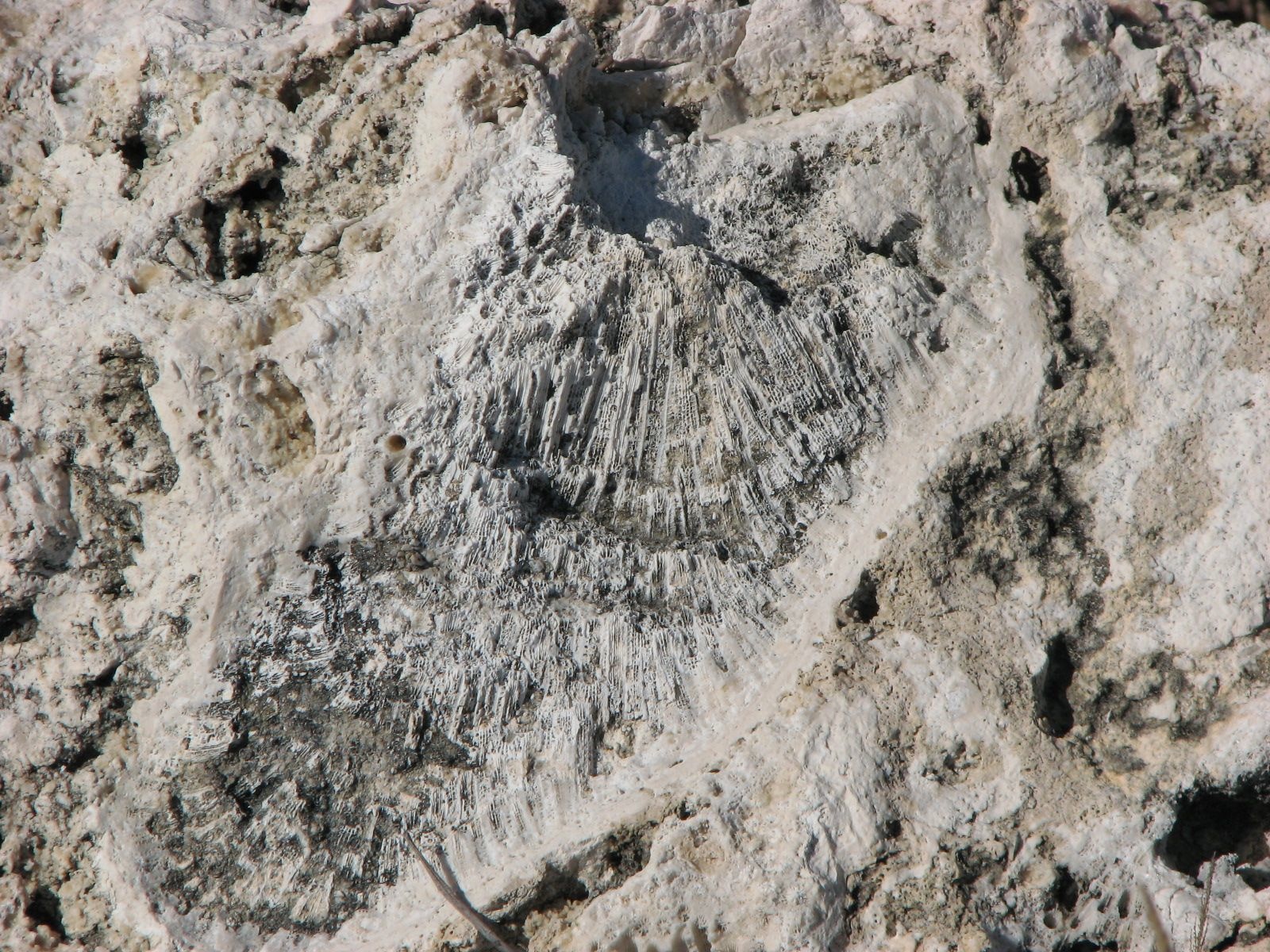 Coral Reefs
Coral Reefs 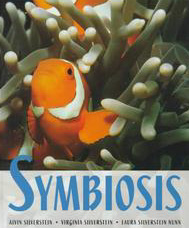
Corals are both a source of & an indicator of ecological conditions.
"Phytoplankton support most marine food webs," but coral reefs are also bastions of tropical marine food webs as Rachel Carson reminded us, " The hard substance of the coral colony is usually white, but may take on the colors of minute plant cells that live within the soft tissues in a relation of mutual benefit.
(p. 201)
• The simplicity of a single polyp is matched in values by the exquisite complexity of the habitat, productivity and diversity of the entire reef system. |
|
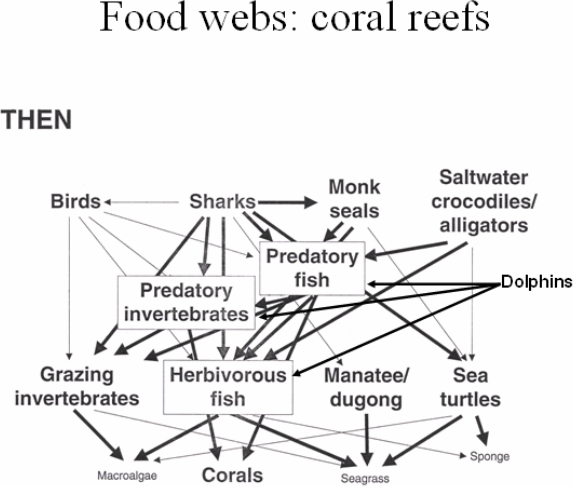 |
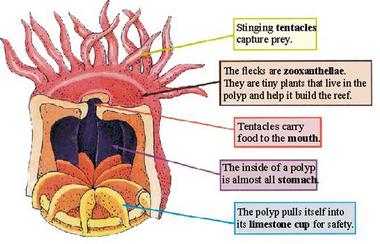 |
| The larger scheme of importance. | The individual polyp's anatomy for feeding. |
"There is the exchange usual in such relations. the plants getting carbon dioxide and the animals making use of the oxygen given off by the plants. This particular association may have a deeper significance, . . .
"Small crustacea and many other forms of microplankton, drifting or swimming against a branch of coral, are instant victims of the myriad stinging cells with which each tentacle is armed. Minute though the individual plankton animals be, the chances of passing unharmed through the interlacing branches of a stand of elkhorn coral seem slender indeed."
The Edge of the Sea, p. 203.
Value of reefs | Edge of the Sea chapter on Coral Coast | | Corals and climate | | Interglacial seas
Essay
“An all animal submarine garden”
by
Joseph SiryCoral reef loss is a worldwide episode that has grave consequences for fishers on island nations. The coral reefs of the Florida keys were initially described by Louis Agassiz on a trip to Key West in 1851, accompanied by his son Alexander. Upon research of Florida's extensive barrier reefs Agassiz understood that these animal polyps and the staggeringly beautiful creations were "n example of an interdependent community of organisms." (Siry, p. 91). The Florida reef system once stretched in healthy biological diversity from the marine waters east of Palm Beach to the Dry Tortugas a set of desert Islands on the edge of the Gulf of Mexico and the Florida straights. Among the most diverse, productive and beautiful associations of life all coral reefs are significant indicators of the ecological integrity of marine waters.
By ecological integrity of the seas we mean that corals thrive in 1) clear water, they 2) must have sunlight penetrating to some depth in the deep water column, in addition 3) these structures are best nourished in warm tropical waters where extensive calcium carbonate based reef systems that persist off of Belize, Florida and reach their greatest living extent in Northeastern Australia. The coral reefs 5) provide shelter along the shore and 6) indicate that the salinity of the water is neither too extreme or too dilute with freshwater runoff from rivers or the land. The seventh and most significant role these reefs play is to sustain a wide array of fish, invertebrates and marine algae that form the basis of a productively enduring community of plants, animals, fungi and bacteria.
Among the more difficult things to comprehend about coral are three disturbingly unfamiliar and thus superficially outrageous attributes. These creatures are colonial symbiotic associations of animals with algae that two, secrete hard calcified rock as they photosynthesize to oxygen-enrich surrounding waters and third they create land under the sea where there would have been no limestone had these reefs not flourished. That animals should resemble plants is as astonishing as they are indicators of the antiquity of their ancestry on the Earth dating back to perhaps the Permian or later Cretaceous seas. As Rachel Carson reminded us, "This world of the Keys has no counterpart elsewhere in the United States, and indeed few coasts of the earth are like it." As she aptly described, "Offshore, living coral reefs fringe the island chain, while some of the Keys themselves are the dead remnants of an old reef whose builders lived and flourished in a warm sea perhaps a thousand years ago." Most difficult for people to understand completely is the simple and amazing fact that –as she wrote– "This is a coast not formed of lifeless rock or sand, but created by the activities of living things which, though having bodies formed of protoplasm even as our own, are able to turn the substance of the sea in to rock."
The Edge of the Sea, p. 191.
Fossil reefs in South Florida indicate that this area was once submerged for thousands of years.The animals that eat the sea's life.
Corals, Darwin and Cnidaria
CORAL REEFS -- corals belong to the Class Anthozoa within the Phylum Cnidaria.
Coral reefs and coral island atolls are biophysical phenomena of unsurpassed diversity in the sea. They manifest a complex growth process that involves every single polyp in the colony. Edward Forbes, a Manx naturalist working in the Aegean Sea (Mediterranean) once marveled, "Coral formations are amongst the greatest of oceanographic phenomena" (Schlee, 1971). Little could have Forbes realized that these animal polyps –distant cousins of jellyfish and anemones– live together with a single celled algae. The partnership is symbiotic because the algae uses sunlight (as does any plant) and produces sugar and carbohydrates for the animal polyp to ingest and deposit calcium carbonate, if it is a hard coral as part of the reef-forming process. Plant and animal together thrive, in otherwise quite barren tropical reaches of the world's oceans.
In the early days of sailing, these elevated lands in the middle of nowhere, were a haven for seasick crew members. They were explained only as being the work of God. Others believed that corals grew from the bottom of the sea in straight vertical column, growing until it reached the surface. However, mystery leads to curiosity, so explorers and naturalists speculated about how corals grew.
WHAT FORMS CORALS REEFS? It is important to distinguish the different ways in which corals form reefs. Fringing reefs refer to corals that grow in shallow waters that are close to land. The top of the coral is about at the height of mean low-tide level. The topography of the shelf is not steep and as the coral grows if this shelf attains any considerable width, the side protected from wave action will have different coral species than the coral that is closer to wave action.
A barrier reef is a massive accumulation of coral that is very prominent. The Great Barrier Reef off of Australia or Belize would be examples. An atoll is a concentric reef that began growing as the once island started to subside.
Coral reefs depend on several factors, which include warm, clear, shallow, well lighted water. Some extreme wave action can "break and damage" the living coral, especially Acropora palmata and A. cervicornis (Elkhorn and Staghorn corals). There exists a delicate balance between the changes in sea level and the growth of polyps in colonies leading to the formation of barrier reefs, coral atolls, fringing reefs and patch reefs. Thus Darwin was generally correct.
Where coral reefs are dominant in the world.

EARLY EXPLORERS IN THE PACIFIC. Throughout the early explorer's journals, especially from the Pacific and Southern Oceans, one finds many references to coral reefs. Many comments were laments of captains who had to acquaint themselves with coral in a most undesirable fashion. "We were little less than certain that we were upon sunken coral rocks, the most dreadful of all others, on account of their sharp points and grinding quality which cut through a ship's bottom almost immediately," notes Captain Cook on approaching New Holland's (Australia) Great Barrier Reefs. The Dutch explorer Abel Janszoom Tasman (Davis, 1928) writing from the Australian coast noted that "...small islands surrounded with sands, shoals, and rocks."Nearly 150 years later, Joseph Banks on the Endeavor notes this same sight, "... a reef such a one as I now speak of is a thing scarcely known in Europe or indeed anywhere but in these seas, it is a wall of coral rock rising almost perpendicularly out of the unfathomable ocean, always overflow at high water commonly 7 or 8 feet, and generally bare at low water, the large waves of the vast ocean meeting with so sudden a resistance make here a most terrible surf breaking mountain high, especially when in our case the general trade wind blows directly upon it."
Some notes, mainly by the ship's naturalists, were invaluable information to later scientists working on the origin of coral atolls and reefs. For example, Darwin studied fervidly the Admiralty charts on the Beagle, on his voyage from England to Brazil.
From Pernambuco, South America, he sent home by mail a first draft of his coral reef theory, before actually seeing one. Alfred von Chamisso (Germany) on the Russian vessel Rurik (1815-18) under Otto von Kotzebue, is accredited with the first critical descriptions of coral atolls in his diary of this voyage published in 1821. "When the reef is of such height that it remains almost dry at low water the corals leave off building. Above this line a continuous mass of solid stone is composed of shells of mollusks and echinoderms with their broken off prickles and fragments of coral united by calcareous sand, produced by the pulverization of shells. The heat of the sun often penetrates the mass of stone when it is dry, so that it splits in many places and the force of the waves is thereby enabled to separated and lift blocks of coral frequently six feet long and three or four in thickness, and throw them upon the reef..." Escholtz the ship's naturalist on the third cruise by Kotzebue, adds more information to the growing articles on coral phenomena, "of corals the variety was very great, as many judge from the circumstances of our having collected 24 kinds within so short a time."
The first person that tried to explain the science behind the different types of coral reefs in the early 1800's was Matthew Flinders, a British Naval Officer (Schlee, 1971), "... the building of islands was coral in function and they built them of a circular shape, so that within the barrier which they, by their life and death had raised their offspring might be safely reared and sent forth to carry on the good work of island building."
Lyell in his first edition of Principles of Geology, advocated a submerged "submarine volcanic origin" theory of coral atolls. Essentially it uses the crater as the base of the atoll growth. It explained nicely the circular shape of an atoll, but failed at explaining the great diameters of atolls, some reaching five to eight miles.
Chamisso proposed a theory of atoll formation as he described corals. He supposes that the majority of coral prefer the surf or the outer portions of the reef. A reef rising from a submarine basis, would reach the surface growing in a ring. Darwin (1851) argued against this theory that is assumed, "that in every case the basis consists of a flat bank, for if it were conically formed like a mountainous mass, we can see no reasons why the coral should spring up from the flanks, instead of from the central and highest parts."
From the Galapagos to Tahiti, Charles Darwin on the HMS Beagle, made many notes on coral island. "We saw several of those most curious rings of coral land, just rising above the water's edge, which have been called Lagoon Island. There low hollow coral islands bear no proportion to the vast ocean out of which they abruptly rise, and it seems wonderful, that such weak invaders are not overwhelmed, by the all powerful an never tiring waves of the great sea, miscalled the Pacific...the organic forces separate the atoms of carbonate of lime one by one from the foaming breakers, and unite them into a symmetrical structure. Myriads of architects are at work night and day month after month, and we see their soft gelatinous bodies through the agency of the vital laws conquering the great mechanical power of the waves of the ocean which neither the art of man nor the inanimate works of nature could successfully resist..." And so stared a long and thoughtful sequence of coral reef writings by Darwin, which was to revolutionize the trend of thought on the origin of coral formation.
Before embarking on this voyage, he read in Lyell's Principle of Geology about the volcanic crater theory origin of coral reefs. He thought that the time was at hand to test the validity of it. "If the rim of a crater offered a basis at a proper depth, I am far from denying that a reef, like a perfectly characterized atoll might be formed, some such, perhaps now exist, but I cannot believe in the possibility of the greater number having thus originated, because on this view the volcanic action must be supposed to have formed, a vast number of craters, all rising within a few fathoms of the surface and not one above it.
After reading of Darwin's work, Lyell (Davis, 1928) reflects, "I must give up my volcanic crater theory forever, though it cost a pang at first for it accounted for so much...All went so well with the notion of submerged crater form and conical volcanoes...Yet in spite of this the whole theory is knocked on the head, and the annular shape and central lagoon have nothing to do with volcanoes, nor even with a crateriform bottom."
Darwin explained coral formations assumes that the Earth is not stationary, in either that it undergoes slow elevation or depression and that coral polyps cannot survive more than 120 feet from the surface of the water. He envisioned that all coral formations (fringing, barrier, and atolls) were all part of the same evolutionary process stretching over millions of years. The first stage involves coral larvae drifting near the shallow waters surrounding a volcanic island and eventually creating a colony. With a prolific coral growth a fringing reef is established.
Coral builds vertically upward, as the land sinks creating a wide and moderately deep lagoon between the reef and shore. The reef has now been converted into a barrier reef. With further subsidence and the removal of the land beneath the water, all that remains is a reef, now termed an atoll. This simple explanation of coral phenomena was widely accepted because it seemed so natural.
An objection that was proposed by Maclaren in 1842 (Davis, 1928) deserves mention, "On the outside of coral reefs, very highly inclined, no bottom is sometimes found with a line of 2000 or 3000 feet and this is by no means a rare case. It follows that the reef ought to have this thickness, as Mr. Darwin’s diagram show that he understood it so. Now if such masses of coral exist under the sea, they ought somewhere to be found on terra firms, for there is evidence that all the lands yet visited by geologists have been since submerged."
CONFIRMING DARWIN. James Dwight Dana, on the U.S. Wilkes Expedition (1839-41) corroborated Darwin's ideas with his observation in the South Seas. His principle of shoreline embayment, strengthened Darwin's case for the general subsidence, which seemed to later geologists the most speculative portion of his coral reef theory. The subsidence that Darwin detected at the Cocos-Keeling atoll in the Pacific was disputed by Ross in 1855, Forbes in 1879, and Guppy in 1889 (Davis, 1928).
J.B. Jukes as naturalist abroad the HMS Fly on an expedition to Australia (1842-46), wrote, "After seeing much of the Great Barrier Reefs and reflecting much upon them, and trying if it were possible by any means to evade the conclusion to which Darwin has come I cannot help adding that his hypothesis it perfectly satisfactory to my mind and rises beyond a mere hypothesis into the true history of coral reefs."
Naturalists and explorers were finding substantial evidence and readily publishing their facts in support of Darwin's theory. Baron von Richthofen in 1859 (Davis, 1928), explained the "existence of the thick masses of dolomite limestone, in the Tyrol, as having coralline origin, formed during a long subsidence of the are." In 1879 Professor Mojsisovics in Dolomit-riffe von Sudirol und Venetien reached the same verdict. No one seemed to dispute Darwin's observation. Sir Archibald Geike, described the theory in 1882 (Davis, 1928) as one theory " which for simplicity and grandeur strikes every reader with astonishment...No more admirable example of scientific method was ever given to the world."
The first substantiated theory to dispute Darwin's was brought forth by a German, Semper in 1863 (Davis, 1928). His observation of the Pelew reefs showed the co-existence of atolls and other types of reefs in the same archipelago. He concluded that elevation of the land was by volcanic eruption. Channels were formed in the rising mass by marine currents; corals grew on the shoals and eventually appeared as reefs. However his evidence gave no indication that he (Darwin) examined the islands with a conscious understanding of the meaning of these features.
Dr. J.J. Rein, from his observations of Bermuda's coral, suggested in 1870 that organic deposits accumulated on still standing submarine summits might serve as foundations for atolls. He dismissed Darwin's subsidence theory, arguing that elevation of land also goes on, and the two are not compatible in the same area. However, he offered no further evidence, just a reinterpretation of Darwin's observations.
CHALLENGING DARWIN. One of the planned purposes of the Challenger expedition, a worldwide cruise in the 1876, was to "give an opportunity to check and repeat previous observations on the structure of coral reefs and growth of coral." However, no geologist was abroad, so J. Moseley, one of the zoologists, in an unofficial Notes by a Naturalist makes mention of them. An aftermath to this voyage brought into light to John Murray, whose job it was to finish collecting all the Challenger's data into publishing approval. It was he who devised a coral theory that challenging Darwin's theories.
Murray felt that platforms could be built up by means of calcareous deposits formed from the sheets and other hard parts of animal and pelagic oozes. When it obtained a depth suitable for coral to grow, larvae became attached and started the beginning of a new colony. These colonies would naturally grow upwards to the surface and from the surface outward in all directions to form a small tabletop of coral. Since the periphery is more favorable increase of growth will occur there. The inside, however, will cause death by starvation and dead animals will be dissolved by a strong carbonated solution and had formed in the stagnant water, thus adding to the bottom layers. On the same principle a fringing reef might grow outward and eventually form a barrier reef.
Many scientists were unwilling to accept Murray's ideas because they believed it wasn't possible for Darwin to be wrong. Even Wyville Thomson, director of the Challenger expedition, told Murray not to publish his theory because it "had not" yet sufficiently corroborated and that therefore any immature, dogmatic publication of it would do less then little to service either to science or to the author of the paper." Thus arose a stagnant atmosphere when it came to discussing coral reefs. Few scientists supported Murray's theory as he majority supported Darwin's theory of coral reefs.
REFERENCES
Darwin, C., 1962. Reprint of (1862) the Structure and Distribution of Coral Reefs. University of California, Berkeley.
Davis, W.M., 1928. The Coral Reef Problem. American Geographical Society. Special Publication Not. 9
Lyell, C., 1868. Principles of Geology. London
Schlee, S., 1971. The Curious Controversy over Coral Reefs. Sea Frontiers. International Oceanographic Foundation. July-August.
Living together is called symbiosis where species sustain one another.
- animal polyp, produces CO2 and requires glucose and O2
- zooxanthellae algae, produces O2 and requires ammonia and CO2
Symbiosis [ living + together]
Mutualism the host and the companion feed off of one another
Commensalism the host is not harmed or benefited by the companion
Parasitism one host feeds another organismLynn Margulis, Symbiotic Planet:
partnership two begin to function as one
dynamic partnerships eukaryotic cells may have originated this way!
symbiosis
root fungus & forest health
lichens & air pollution
corals & water temperature
| Contact | |
 |
J. Siry |
| Marshes of the Ocean Shore | |
| Sources; | |
 |
,
.

.gif)
